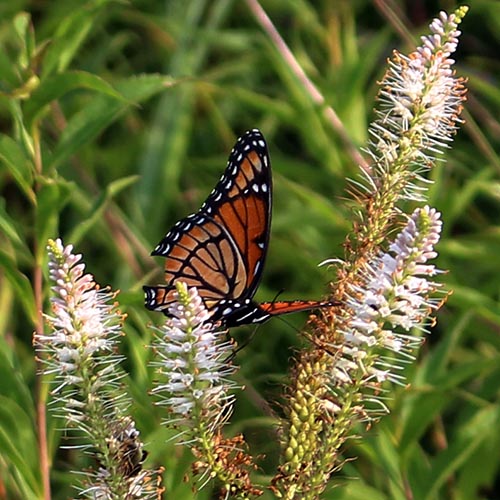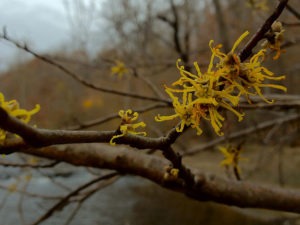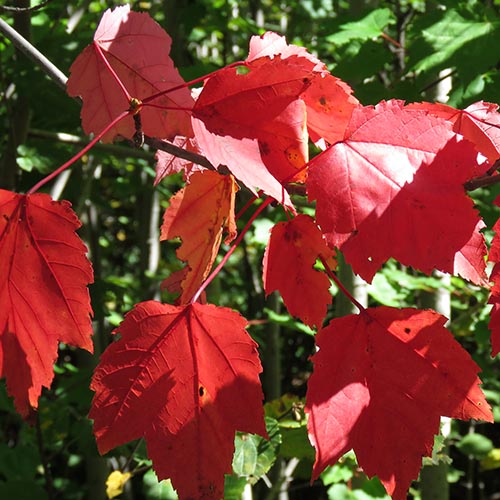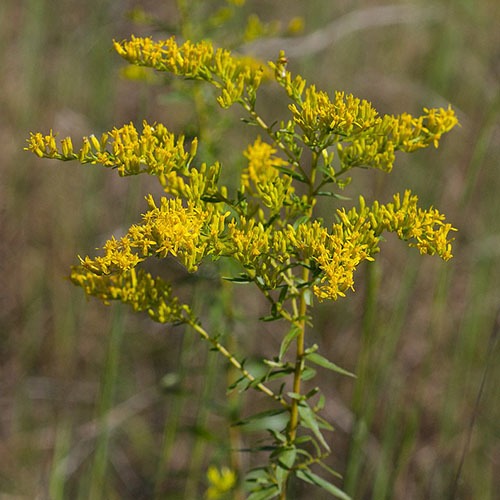Note: Staghorn sumac and poison sumac (Toxicodendron vernix) are two different plants. They are both in the cashew family, but poison sumac is more closely related to poison ivy (Toxicodendron radicans) than staghorn sumac. At one time poison ivy and poison sumac were considered part of the Rhus genus, and some older references still contain this old nomenclature. However, reclassification of the genus placed both poison sumac and poison ivy into the Toxicodendron genus. Staghorn sumac, and other members of the current Rhus genus, do not produce urushiol oils and are therefore safe to touch.

Staghorn sumac (Rhus typhina) is a tall shrub / small tree native to most of the eastern U.S. It grows naturally in open, disturbed sites and may form dense colonies or clumps.
There are several species of sumac native to the eastern U.S. with staghorn sumac being one of the tallest. Staghorn sumac can grow up to 30 feet tall, but is typically closer to 10 – 15 feet tall. It has long, pinnately compound, dark green leaves that can be very pretty in the fall. Staghorn sumac also has thick hairy branches that supposedly reminded someone of a deer’s antlers in velvet, thus its common name. (European deer are called stags.)
Honey bees, many native bee species, and several butterfly species are highly attracted to the flowers of staghorn sumac. The small, yellow-green flowers form in dense clusters that standup at the ends of the twigs. They typically bloom in June or July. Depending on the tree, it could produce all male flowers, all female flowers, or all perfect flowers meaning that each flower has both male and female flower parts.

Only trees with female flowers or perfect flowers will produce fruit. The ripe fruit is a rich red and is fuzzy, much like the twigs. The clusters of ripe fruit standup on the twigs, much like the flowers, and are sometimes mistaken for the flowers because the clusters of fruit are so showy. Over 300 species of songbirds are known to feed on sumac fruit. People will also sometimes collect the berries and use them to make a lemonade-type drink.
The foliage is also a valuable food source for caterpillars of the red-banded hairstreak butterfly and several species of moths. In addition, some small carpenter bee species will create nesting chambers in sumac twigs.
Although staghorn sumac is most often found growing along the sides of roads, the edges of woods, or in fields, it can also be grown as a native, ornamental tree or shrub in a landscaped setting. In a landscaped setting, staghorn sumac can provide year-round interest with its dark green foliage in the spring and summer, showy red berries in the summer and fall, and interesting twigs in the winter. Additionally, the berries will often stay on the tree for most of the winter if they aren’t eaten by birds, which provides additional winter interest. If you are looking for a small tree that provides significant value for backyard wildlife and pollinators as well as year-round interest for your garden, then staghorn sumac is worth considering.


This article was part of Shannon’s original Kentucky Pollinators and Backyard Wildlife blog which evolved into the blog for Backyard Ecology.

Backyard Ecology: Exploring Nature in Your Backyard
Nature isn’t just “out there.” It’s all around us, including right outside our doors. Hi, my name is Shannon Trimboli, and I am the host of Backyard Ecology. I live in southcentral Kentucky and am a wildlife biologist, educator, author, beekeeper, and owner of a nursery specializing in plants for pollinators and wildlife conservation. I invite you to join me as we ignite our curiosity and natural wonder, explore our yards and communities, and improve our local pollinator and wildlife habitat. Learn more or subscribe to my email list at www.backyardecology.net.



